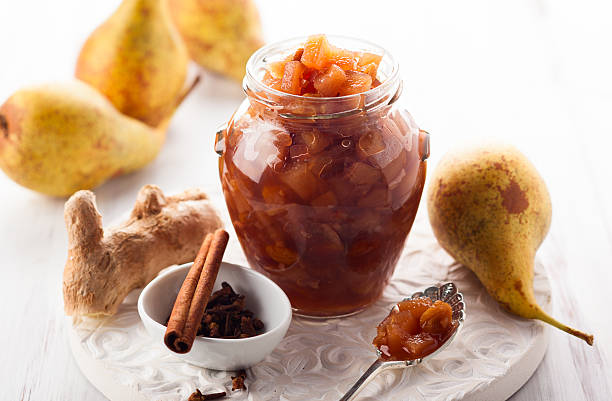Autumn is here and brings the leaves on the trees to shine in the brightest colors. Many autumn fruits and vegetables are also ready for harvest and appear colorful on trees, bushes, and in the fields. In order to be able to enjoy the delicious yield for a long time, canning is particularly suitable. That’s why here’s the latest do-it-yourself: make your own autumn jam!
Canning fruits and vegetables are super complicated and take forever? No way: Exactly the opposite is the case! Making fall jam yourself doesn’t take much longer than an hour and the effort is richly rewarded. The aromatic and colorful contents of the preserving jars drive away from the winter blues and sweeten the day. And best of all: Everyone can cook and enjoy their very own favorite autumn jam!
Sea Buckthorn Jam

The ingredients
For eight glasses of 250 ml each
- 1 kg sea buckthorn berries
- 100 ml orange juice
- 500 g preserving sugar 2:1
The preparation
- Wash the sea buckthorn berries and cover with a little water in a pot and bring to a boil until the berries burst.
- Now pass through a sieve and weigh out the fruit pulp. Bring the preserving sugar and the orange juice to a boil in a saucepan and simmer for about four minutes.
- Now carry out the gelling test and fill it into the jam jars. Seal airtight and turn the lid upside down and leave to cool.
Pumpkin Lemon Jam
The ingredients
For eight glasses of 250 ml each
- 1.2 kg Hokkaido pumpkin pulp
- 1 kg preserving sugar 2:1
- 3 unwaxed lemons
- 600 ml orange juice
- ginger to taste
- 2 tsp vanilla sugar
The preparation
- Cut the flesh into small cubes, mix with the preserving sugar in a large saucepan and leave to stand for about 1 hour.
- Meanwhile, grate the zest from two lemons and squeeze the juice. Cut the third lemon into thin slices.
- Rinse the jars with hot water and drain them on a tea towel.
- Bring the pumpkin cubes to a boil with the lemon zest, juice, slices, and orange juice. Cook the mixture until the squash is soft and has set.
- Fill the jam into the screw-top jars, seal immediately and place on top of the cap. Do this until all the jam is filled. After about 5 minutes, the glasses can be turned upside down again.
Pear and ginger jam with cinnamon

The ingredients
For eight glasses of 250 ml each
- 1.2 kg of pears
- 4 tbsp lemon juice
- 40 g ginger root
- 1 kg preserving sugar 2:1
- 2 sticks of cinnamon
The preparation
- Peel the pears, quarter, core, cut into small pieces and mix with the lemon juice. Then coarsely puree everything with a hand blender. Peel the ginger, cut it into small cubes and add it to the pear sauce.
- Weigh the pear puree and add the appropriate amount of preserving sugar and cinnamon sticks. Bring everything to a boil while stirring and let it simmer for about four minutes. Fish out the cinnamon sticks and fill the hot jam into the glasses.
- Immediately close the jars carefully, place them on the lids and leave to cool for about 15 minutes, then turn upside down and leave to cool.








